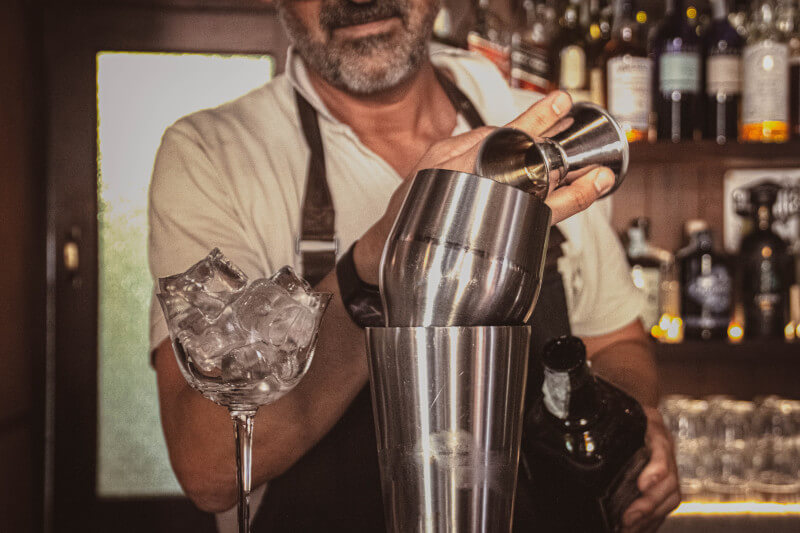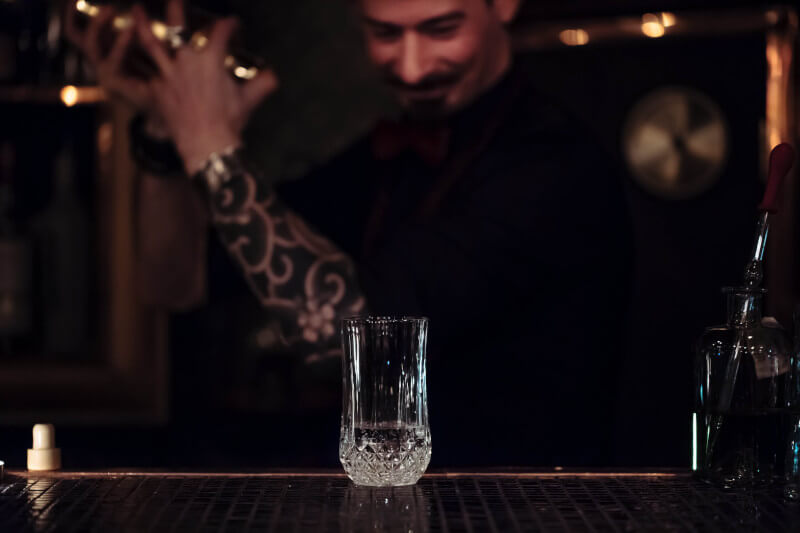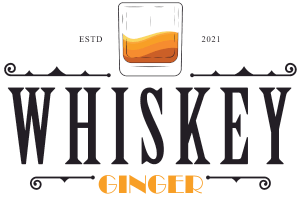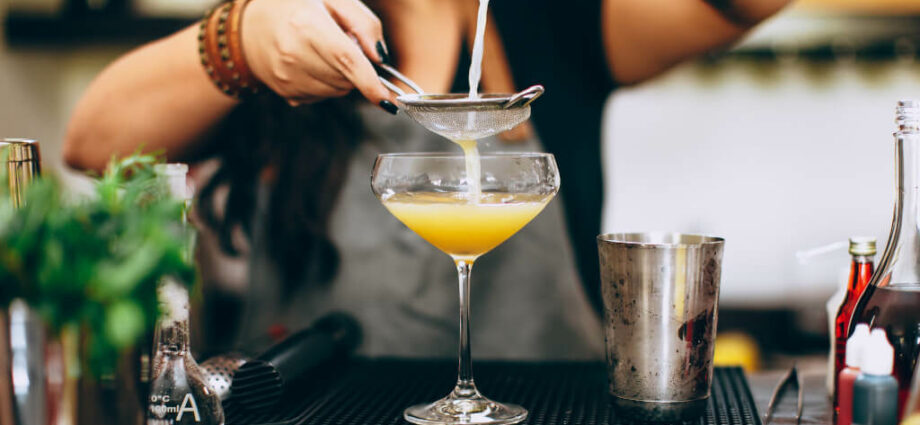Today’s busy society is always on the lookout for fresh recreation options. Home bartending and mixology are popular and lucrative hobbies. Not only may people experiment with their imaginations and make drinks that are uniquely their own, but they can also show off their newfound talents to their loved ones.
There are many advantages to mastering the skill of mixology. In the first place, it helps you have a better appreciation for drinks and the ingredients that go into them. Now that you know this, you can boldly try out new ingredients and recipes. Second, learning the fundamentals of mixology can help you save money because it’s usually less expensive to make cocktails at home than to buy them at a bar. Last but not least, mixology is best enjoyed in the company of others, making it an ideal way to bond while producing lasting memories.
This user-friendly manual is meant to provide budding home bartenders with the basics they need to start making cocktails. In this article, you will learn the fundamentals of home bartending, including how to set up a bar, what equipment is needed to make drinks, and some of the most basic mixology methods. Get your shaker ready because we’re about to begin!
So, What Exactly is This Thing Called “Mixology?”
The art and science of creating, mixing, and serving cocktails is known as mixology. A mixologist is a professional who enjoys the art of creating alcoholic beverages. They study the science of mixed drinks and learn how to make classic cocktail recipes.
The primary distinction between a mixologist and a barman is the level of expertise required to create original cocktail concoctions. Mixologists are experts at creating drinks with the perfect balance of flavors by balancing the use of multiple components.
Knowing how to make cocktails requires knowledge of ingredients, the ability to add specialized garnishes and the proper equipment. A mixologist is someone who practices the art of making mixed cocktails, which can be thought of as a branch of chemistry. You can even get certified in mixology by taking classes online.
Can You Name the Earliest Cocktail?
Although there are some conflicting reports, the vast majority of specialists identify it as a Sazerac. A mixture of whiskey, absinthe, bitters, and sugar, it was first created in New Orleans in the 1800s.
The Sazerac is one of the most iconic drinks associated with Mardi Gras and the Crescent City. When you’re in the French Quarter, stop by any bar or restaurant and have this timeless beverage.
Define a Molecular Mixology
Making drinks with molecular gastronomy tools and methods is the domain of molecular mixologists. This branch of gastronomy takes a chemically-informed scientific approach to food preparation.
In this case, the components and their characteristics take center stage. The term “molecular mixology” is used to describe the application of gastronomy principles to the development of new cocktail recipes and techniques.
Mixing Instruments
Skilled mixologist also makes use of additional implements in their quest for excellence. A skilled mixologist can serve delicious drinks to customers with the correct ingredients and an array of specialized equipment. Some of the more common items used in the art of mixing drinks are as follows:
- Mixologists and bartenders use long-handled spoons called “bar spoons” to stir beverages. A spiral handle provides a better grip.
- A citrus squeezer is a tool used in mixology to extract juice from citrus fruits.
- On a bar, a drip tray can be found underneath the taps. Liquids are contained and then released from the device.
- Cocktail condiments and garnishes can be kept in a tray and easily accessed when needed.
- A jigger is a type of measurement tool that resembles an hourglass. It guarantees that the alcohol content of each drink is just right.
- Fruit, herbs, and sugar can all be broken up using a muddler to release their distinctive flavors.
- Ingredients are combined and mixed in a shaker. The Boston shaker, the Cobbler shaker, and the French shaker are the
- three standard cocktail shakers used by professionals.
- A mixologist or barman can save time and effort with the use of a fast liquor pourer. It’s a metal spout that fits into the cap of various bottle heights used to store alcoholic beverages.
- A strainer is used to filter out any debris before it enters a beverage. It’s a great way to guarantee a silky cocktail.
- Tongs can be used to pick up and transport ingredients with ease. Everything that isn’t the liquid itself but is added to a cocktail falls under this category, such as garnishes and ice.
Tips for Aspiring Bartenders

Do you want to learn how to mix drinks but don’t know where to begin? Perhaps you’re an occasional home barman who’s interested in learning more.
In any case, you can choose from a wide range of possibilities. Learning from a professional mixologist is so accessible that you don’t even have to leave your house. We’ve compiled a convenient selection of top-rated mixology programs available online. But first, we’ll go over the five mixology techniques before we get to our list.
Techniques of Mixology
Becoming a mixologist requires first understanding the processes involved in making mixed drinks. The following five mixology techniques provide skilled bartenders with a virtually limitless scope for originality:
Method 1: Stirring
Cocktail ingredients and ice are stirred together in a mixing glass. You swirl them with a stirrer and then filter them into a new glass. This technique is essential for preventing excessive watering down of alcoholic beverages made with clear liquids like spirits, wines, and liqueurs.
Method 2: Shaking
The contents and ice are shaken together in a cocktail shaker. It goes wonderfully in cocktails made with milk, eggs, or fruit juices. This technique is essential for achieving the full flavor potential of many traditional and modern drinks. For this reason, a cocktail shaker should be among the tools in your home bar.
Method 3: Blending Technique
The mixing technique is ideal for creating cocktails that include solid food, like fruit or nuts. If making fruit puree for the cocktails, ice should be added last. Making a lot of drinks at once with a blender is quick and easy.
Method 4: Layering
To prepare drinks with contrasting colors and tastes, use this technique. Slowly pour each one into a small, straight-sided glass over the back of a spoon. When making liqueurs, spirits, or syrups, this is the best possible procedure.
Method 5: Construction
Each ingredient should be poured into a glass before being stirred together. When making a drink that asks for ice, put it in the glass first. Once you have all of the ingredients, you can “build” the cocktail.
Cocktail Shaking Instructions

To properly shake a cocktail, follow these five easy steps:
Put All of Your Ingredients and Ice Into a Shaker
The first step is to fill the shaker pan with ice and the other ingredients. If you’re making cocktails in a Boston shaker, use the smaller cup or pint glass. A cocktail jigger is a useful tool for accurately measuring alcohol and other liquids.
The Shaker Must Be Adequately Sealed
For use, invert the larger Boston shaker tin onto the smaller tin or pint glass. Make sure it’s tightly shut by tapping it with your palm. To close the Cobbler shaker’s lid, simply set it on top and give it a light tap.
Shake It Up
Hold the shaker firmly so you don’t make a mess of yourself and others around you. Mix your drink well by shaking it hard over your shoulder. Shake it horizontally for 10 to 15 seconds, or until condensation appears on the shaker’s outside.
Throw Open the Shaker
You may need to tap the side of your Boston or French shaker to release pressure. Once you’ve done that, you may take the shaker apart at the seam and use it normally. To use a Cobbler shaker, take the top off the shaker.
Pour Through a Strainer Into a Glass
Pour the contents of a Boston or French shaker through a Hawthorne strainer into the proper bar glasses. The Cobbler shaker has a strainer built right in, so you can pour your cocktail straight from the shaker into your glass.

